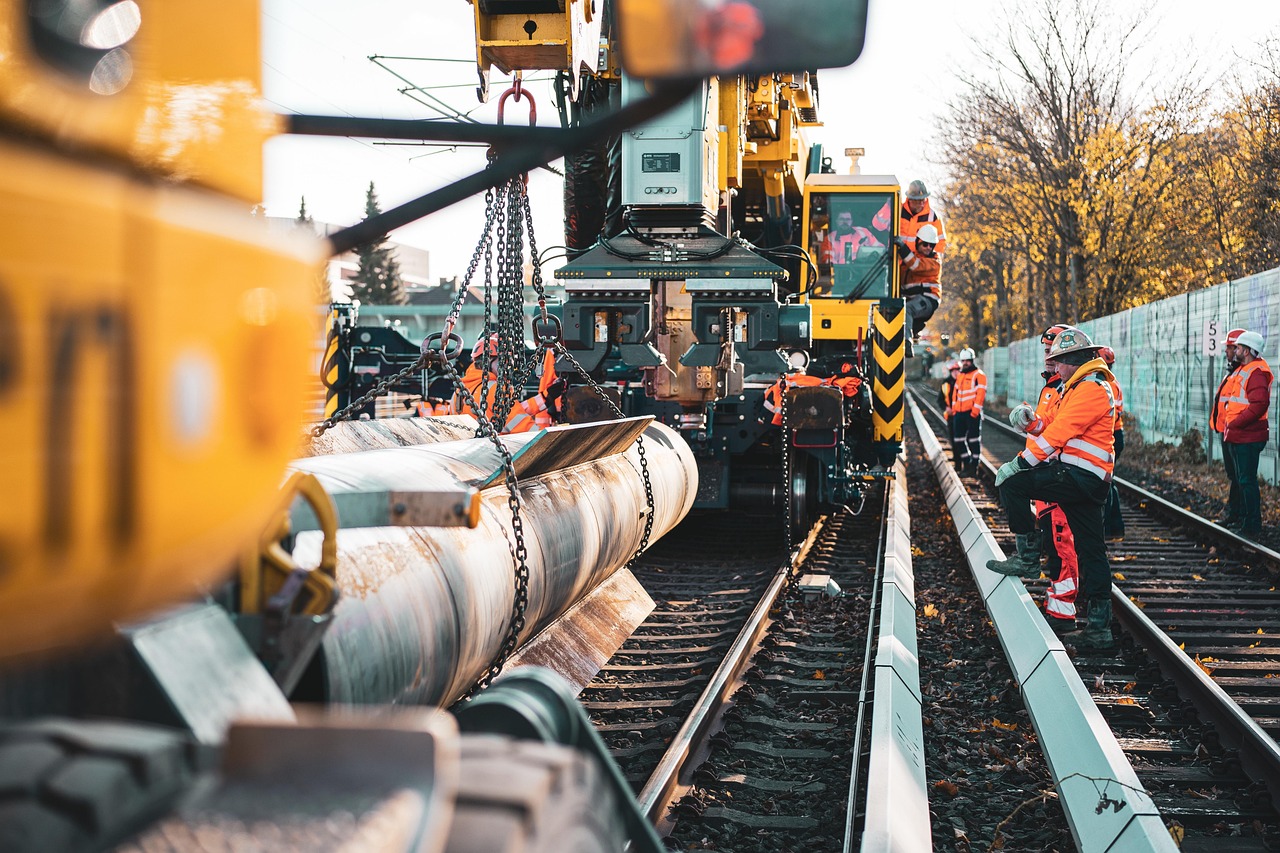Predictive Maintenance Strategies for Equipment Lifecycle Optimization
Reduce downtime and extend equipment life with data-driven predictive maintenance approaches that transform traditional reactive repair into proactive asset management.

Traditional reactive maintenance approaches—where equipment is repaired only after failure occurs—cost organizations an average of 3-9 times more than proactive maintenance strategies. Predictive maintenance represents the evolution from reactive firefighting to data-driven asset optimization, leveraging equipment data, usage patterns, and condition monitoring to prevent failures before they occur while avoiding unnecessary maintenance that wastes resources.
For organizations managing material handling equipment fleets, the transition from reactive to predictive maintenance delivers measurable benefits: 25-30% reduction in maintenance costs, 35-45% decrease in equipment downtime, 20-25% extension of asset lifespan, and 70-75% reduction in catastrophic equipment failures. These aren't theoretical projections—they represent actual outcomes achieved by organizations that have successfully implemented predictive maintenance programs.
Understanding Predictive Maintenance Fundamentals
Predictive maintenance differs fundamentally from both reactive maintenance (fix it when it breaks) and preventive maintenance (fix it on a schedule regardless of condition). Instead, predictive approaches use real-time condition data and historical patterns to determine the optimal time for maintenance interventions—late enough to maximize component utilization, but early enough to prevent failure and secondary damage.
Three Pillars of Predictive Maintenance
- •Condition Monitoring: Continuous or periodic measurement of equipment health indicators including vibration analysis, temperature monitoring, fluid analysis, electrical current signature, and visual inspection data
- •Data Analytics: Processing and analysis of condition data to identify trends, anomalies, and failure precursors using statistical models, machine learning algorithms, and expert rule sets
- •Maintenance Optimization: Scheduling maintenance interventions based on actual equipment condition and failure probability rather than arbitrary time intervals or reactive responses to breakdowns
Key Insight: Effective predictive maintenance doesn't require expensive sensors or complex AI systems. Organizations can achieve significant benefits starting with structured analysis of existing inspection data, usage hours, and maintenance history. Advanced technologies amplify results but aren't prerequisites for getting started.
Implementing Condition-Based Monitoring
Condition-based monitoring forms the foundation of predictive maintenance, providing the data streams that enable early detection of developing problems. For material handling equipment, several monitoring approaches deliver high value with reasonable implementation complexity.
Daily Inspection Data Analysis
Your existing OSHA-required daily inspections generate valuable condition data that often goes underutilized. By systematically analyzing inspection results over time, patterns emerge that predict impending failures:
- •Hydraulic System Trends: Tracking minor leak reports often reveals developing seal failures 2-4 weeks before catastrophic hydraulic system failure
- •Steering Response Degradation: Progressive steering difficulty reported across multiple inspections indicates developing issues with steering cylinders, linkages, or hydraulic pressure
- •Brake Performance Changes: Gradual increases in stopping distance or reduced brake responsiveness predict brake system failures before complete loss of braking
- •Lift Function Irregularities: Intermittent lift hesitation, slower lift speeds, or increased noise levels signal developing hydraulic pump or cylinder issues
- •Electrical System Anomalies: Flickering lights, intermittent horn operation, or battery voltage fluctuations indicate electrical system degradation
Implementation Tip: Digital inspection systems that track inspection responses over time can automatically flag degrading trends and alert maintenance teams before failures occur. Organizations using trend analysis report 60% reduction in unexpected breakdowns.
Usage Hour Tracking and Component Life Management
Different equipment components have predictable service lives measured in operating hours. Tracking cumulative usage hours and component-specific hour counts enables proactive replacement before failure:
- •Tire Replacement: Industrial tires typically last 2,000-4,000 operating hours depending on surface conditions and load patterns
- •Battery Cycle Life: Forklift batteries generally deliver 1,500-2,000 charge cycles before capacity falls below acceptable levels
- •Hydraulic Hose Replacement: Hydraulic hoses should be replaced every 5-7 years or 3,000-5,000 operating hours to prevent catastrophic failures
- •Filter Changes: Hydraulic and air filters require replacement every 500-1,000 operating hours depending on operating environment
- •Chain Inspection and Replacement: Lift chains require detailed inspection every 500 hours with replacement at 3,000-5,000 hours or when wear exceeds specifications
Failure Mode Analysis and Prevention
Understanding how and why equipment fails enables targeted prevention strategies. Failure mode and effects analysis (FMEA) identifies the most critical failure modes and their early warning signs, allowing maintenance teams to focus monitoring efforts where they deliver maximum impact.
Common Failure Modes in Material Handling Equipment
- •Hydraulic System Failures: Seal degradation, contaminated fluid, pump wear, and hose deterioration account for approximately 40% of forklift failures. Early indicators include minor leaks, slower operation, increased noise, and elevated operating temperatures.
- •Electrical System Failures: Battery issues, corroded connections, failed solenoids, and wiring damage cause roughly 25% of breakdowns. Warning signs include starting difficulties, intermittent operation, voltage fluctuations, and battery overheating.
- •Brake System Failures: Worn brake pads, hydraulic leaks, and adjustment issues represent about 15% of critical failures. Indicators include increased stopping distance, brake pedal travel changes, and unusual noises during braking.
- •Steering System Failures: Hydraulic cylinder leaks, worn linkages, and tire issues cause approximately 10% of equipment failures. Warning signs include increased steering effort, wandering during straight-line travel, and uneven tire wear.
- •Mast and Lifting Mechanism Failures: Chain wear, cylinder leaks, and structural fatigue account for about 10% of failures. Indicators include jerky lift operation, visible chain wear, mast lean, and unusual noises during lifting.
Safety Critical: Some failure modes present immediate safety risks requiring emergency shutdown. Establish clear criteria for when equipment must be immediately removed from service versus scheduled for near-term maintenance. Hydraulic leaks, brake issues, and mast structural concerns always require immediate attention.
Data-Driven Maintenance Scheduling
Predictive maintenance transforms scheduling from arbitrary calendar intervals to intelligent, condition-based timing that maximizes component life while minimizing failure risk. This optimization requires combining multiple data sources into actionable maintenance schedules.
Scheduling Optimization Factors
- •Condition Trend Analysis: Rate of degradation indicated by inspection data and condition monitoring
- •Operating Hour Accumulation: Cumulative hours on equipment and specific components approaching manufacturer-recommended service intervals
- •Failure Probability Models: Statistical analysis of historical failure data to predict probability of failure over specific time horizons
- •Operational Impact Assessment: Criticality of equipment to operations and availability of backup units
- •Maintenance Resource Availability: Technician availability, parts inventory, and scheduled downtime windows
- •Seasonal and Demand Patterns: Adjusting maintenance timing to avoid peak operational periods while ensuring readiness for demand surges
Building a Predictive Maintenance Schedule
Effective predictive schedules combine time-based preventive tasks with condition-based interventions:
- •Daily Tasks: Pre-operational inspections, visual fluid level checks, and basic cleanliness maintenance
- •Weekly Tasks: Detailed visual inspections, tire pressure verification, battery water levels (for flooded batteries), and lubrication of movement points
- •Monthly Tasks: Fluid sampling and analysis, detailed electrical system checks, brake adjustment verification, and mast inspection
- •Quarterly Tasks: Comprehensive hydraulic system inspection, load test verification, structural integrity assessment, and operator refresher evaluations
- •Annual Tasks: Complete equipment teardown inspection, component replacement based on manufacturer recommendations, certification updates, and capacity plate verification
- •Condition-Triggered Tasks: Maintenance interventions scheduled based on inspection trends, operating hour thresholds, or condition monitoring alerts regardless of calendar timing
Best Practice: Integrate predictive maintenance scheduling with your inspection system so that emerging condition trends automatically generate work orders with appropriate priority levels. This eliminates the gap between identification and action that often leads to preventable failures.
Measuring Predictive Maintenance ROI
Predictive maintenance programs require investment in systems, training, and process changes. Demonstrating return on investment justifies continued investment and identifies opportunities for program enhancement.
Key Performance Indicators
- •Mean Time Between Failures (MTBF): Average operating hours between equipment failures, target improvements of 30-50% over baseline
- •Planned vs. Unplanned Maintenance Ratio: Percentage of maintenance performed proactively versus reactively, target 80% planned / 20% unplanned
- •Maintenance Cost per Operating Hour: Total maintenance spend divided by fleet operating hours, target reduction of 20-30%
- •Equipment Availability: Percentage of time equipment is operational and available for use, target improvement from typical 85-90% to 95-98%
- •Secondary Damage Incidents: Frequency of failures causing damage beyond the initial component failure, target reduction of 70-80%
- •Emergency Maintenance Events: Number of after-hours or emergency maintenance calls, target reduction of 60-75%
Advanced Predictive Technologies
While basic predictive maintenance delivers substantial value, advanced technologies can further enhance program effectiveness for organizations ready to increase their investment:
- •Vibration Analysis: Portable or permanently-mounted vibration sensors detect developing bearing failures, alignment issues, and component imbalance weeks before failure
- •Infrared Thermography: Thermal imaging identifies developing electrical connection issues, bearing problems, and hydraulic system inefficiencies through temperature anomalies
- •Fluid Analysis: Laboratory analysis of hydraulic fluid and lubricants reveals contamination, wear particles, and chemical degradation indicating internal component wear
- •Telematics Systems: Integrated equipment monitoring capturing operating hours, impact events, operational parameters, and maintenance alerts for fleet-wide analysis
- •Predictive Analytics Platforms: Machine learning systems that process multiple data streams to predict failures with increasing accuracy as they learn from historical patterns
The journey to predictive maintenance excellence is evolutionary rather than revolutionary. Start with systematic analysis of existing inspection data, build robust data collection processes, demonstrate value through measurable improvements, and gradually incorporate advanced technologies as justified by returns. Organizations that follow this path achieve sustainable competitive advantages through superior asset reliability and optimized maintenance investments.
Case Study: Logistics Company Achieves 43% Maintenance Cost Reduction
Global Logistics Partners operated 120 forklifts across five distribution centers, spending $840,000 annually on maintenance—primarily reactive repairs after failures. Unplanned downtime averaged 18% of fleet capacity, forcing the company to maintain 15 spare units just to ensure adequate operational capacity. Equipment failures disrupted operations weekly, causing missed shipping deadlines and customer dissatisfaction.
The Predictive Maintenance Transformation
Global Logistics implemented a comprehensive predictive maintenance program over 12 months, focusing on data-driven failure prediction and proactive intervention:
- •Phase 1 (Months 1-3): Digitized all inspection processes, implemented telematics on all equipment, established baseline failure rates and costs
- •Phase 2 (Months 4-6): Developed predictive algorithms based on inspection findings, usage patterns, and historical failures
- •Phase 3 (Months 7-9): Implemented condition-based maintenance triggers, trained maintenance team on predictive approaches
- •Phase 4 (Months 10-12): Refined models based on outcomes, integrated supply chain for just-in-time parts availability
Quantified Results After 18 Months
- •Maintenance Costs: Reduced from $840,000 to $479,000 annually (43% reduction)
- •Unplanned Downtime: Decreased from 18% to 4% of fleet capacity
- •Spare Unit Requirements: Reduced from 15 units to 6 units, freeing $270,000 in capital
- •Equipment Lifespan: Extended average service life from 7.2 years to projected 9.5 years
- •Emergency Repairs: Dropped 78% through proactive component replacement
- •Secondary Damage: Reduced 85% by catching failures before cascade damage occurs
- •Maintenance Staff Productivity: Improved 34% through better planning and reduced firefighting
Total Program ROI: Global Logistics achieved $492,000 in annual savings against $145,000 in program costs (telematics, software, training), delivering 340% first-year return. The maintenance director estimates cumulative five-year value at $2.1 million.
Failure Mode Analysis and Component-Specific Strategies
Effective predictive maintenance requires understanding how different components fail and what early indicators signal developing problems. Each major equipment system exhibits characteristic failure patterns requiring tailored monitoring approaches.
Hydraulic System Failure Prediction
- •Early Indicators: Slower lift/tilt response times, increased operating temperature, fluid discoloration, unusual noise during operation
- •Monitoring Methods: Hydraulic pressure testing, fluid sampling and analysis, cylinder rod inspection for scoring, seal condition assessment
- •Typical Failure Progression: Initial seal degradation → minor fluid leaks → pressure loss → cylinder failure → complete system failure (typically 2-6 months progression)
- •Intervention Timing: Replace seals when first leaks appear (weeks before cylinder failure), change fluid at first contamination signs (months before component damage)
- •Cost Impact: Seal replacement costs $150-300, cylinder rebuild costs $800-1,500, complete system failure costs $3,000-8,000 plus downtime
Electrical System Degradation Patterns
- •Early Indicators: Intermittent electrical issues, dimming lights, slow motor response, unusual battery drain, corroded connections
- •Monitoring Methods: Voltage drop testing, connection resistance measurement, thermal imaging of electrical panels, battery load testing
- •Typical Failure Progression: Connection corrosion → intermittent operation → arcing and heating → component failure → fire risk (1-4 months progression)
- •Intervention Timing: Clean and protect connections at first corrosion signs, replace wiring showing heat damage before insulation failure
- •Cost Impact: Connection maintenance costs $50-100, component replacement costs $400-1,200, electrical fire damage costs $15,000-50,000+
Drive Train and Transmission Warning Signs
- •Early Indicators: Unusual vibration, grinding or whining sounds, difficulty shifting, fluid contamination, increasing operating temperature
- •Monitoring Methods: Vibration analysis, fluid level and quality checks, gear oil metal particle analysis, operating temperature monitoring
- •Typical Failure Progression: Bearing wear → increased vibration → gear tooth damage → transmission failure (2-8 months progression)
- •Intervention Timing: Replace bearings when vibration increases 20% above baseline (3-6 months before failure), change fluid at first metal particle detection
- •Cost Impact: Bearing replacement costs $300-800, gear repair costs $2,000-4,000, transmission replacement costs $8,000-15,000
Component Economics: Proactive component replacement typically costs 15-25% of reactive failure repair due to labor efficiency, prevention of secondary damage, elimination of emergency service premiums, and scheduled downtime versus unplanned interruptions.
Building the Predictive Maintenance Team and Skills
Successful predictive maintenance programs require new skills beyond traditional reactive maintenance capabilities. Organizations must develop or acquire expertise in data analysis, condition monitoring, and predictive modeling while maintaining fundamental mechanical competencies.
Essential Team Roles and Capabilities
- •Predictive Maintenance Coordinator: Oversees program implementation, manages data analysis, refines predictive models, and coordinates maintenance scheduling
- •Condition Monitoring Technicians: Conduct specialized inspections, operate diagnostic equipment, collect and analyze condition data
- •Data Analyst: Processes equipment data, identifies patterns and trends, validates predictive algorithms, generates performance reports
- •Traditional Maintenance Technicians: Execute repairs and component replacements, provide feedback on prediction accuracy, contribute field observations
- •Inventory Specialist: Manages predictive parts inventory, ensures component availability based on failure forecasts, optimizes stock levels
Training and Development Pathways
Organizations can build predictive maintenance capabilities through structured training programs, external certifications, and progressive skill development:
- •Vibration Analysis Certification: ISO Category I-III vibration analyst training for bearing and alignment monitoring
- •Thermography Certification: Infrared Thermography Training Center Level I-II certification for electrical and mechanical inspections
- •Fluid Analysis Training: Lubrication specialist certification and oil analysis interpretation skills
- •Data Analytics Courses: Statistical analysis, machine learning basics, and predictive modeling fundamentals
- •Equipment-Specific Training: Manufacturer-provided advanced diagnostics and troubleshooting programs
- •Reliability Engineering Principles: Root cause analysis, failure mode effects analysis (FMEA), and reliability-centered maintenance (RCM) methodologies
Integration with Enterprise Systems and Workflows
Predictive maintenance programs deliver maximum value when integrated with broader enterprise systems including CMMS, ERP, inventory management, and operations planning platforms. This integration eliminates data silos and enables organization-wide optimization.
Critical System Integrations
- •CMMS Integration: Automatic work order generation when predictive triggers are met, maintenance history feeding prediction models, parts consumption tracking
- •Inventory Management: Predictive demand forecasting for maintenance parts, automated reorder triggers, optimization of safety stock levels
- •Operations Planning: Equipment availability forecasting enabling production scheduling, planned downtime coordination, resource allocation optimization
- •Financial Systems: Maintenance budget forecasting, cost tracking by equipment and component, ROI measurement and reporting
- •Telematics Platforms: Real-time equipment data streaming, usage pattern analysis, multi-fleet benchmarking
Integration Value: Organizations with fully integrated predictive maintenance systems report 35-50% greater ROI than standalone programs due to eliminated double-entry, automated workflows, cross-functional visibility, and optimized resource allocation.
Overcoming Common Implementation Challenges
Organizations implementing predictive maintenance programs encounter predictable challenges. Anticipating and addressing these obstacles accelerates program maturity and value realization.
Top Implementation Obstacles and Solutions
- •Data Quality Issues: Incomplete or inaccurate historical data limiting initial model development. Solution: Start fresh with robust data collection, focus on forward-looking predictions rather than historical analysis
- •Organizational Resistance: Maintenance technicians skeptical of "computer predictions" versus their experience. Solution: Involve technicians in model development, validate predictions against their insights, share success stories
- •Technology Complexity: Overwhelming options for sensors, software, and analytical tools. Solution: Start simple with inspection data analysis, add technology incrementally as value is proven
- •Budget Constraints: Difficulty justifying upfront investment without proven returns. Solution: Pilot with subset of fleet, document savings, expand based on demonstrated ROI
- •Skill Gaps: Lack of in-house expertise in condition monitoring and predictive analytics. Solution: Partner with equipment dealers or consultants initially, build internal capabilities over time
- •False Positives: Predictive triggers generating maintenance recommendations for components still functional. Solution: Refine thresholds based on outcomes, accept some over-maintenance initially to prevent under-maintenance
Future Trends in Predictive Maintenance
Predictive maintenance continues evolving as new technologies emerge and analytical capabilities advance. Organizations should monitor these trends to maintain competitive advantage:
- •Artificial Intelligence and Machine Learning: Sophisticated algorithms processing multiple data streams to predict failures with increasing accuracy as they learn from patterns
- •Digital Twins: Virtual equipment replicas simulating operating conditions and predicting failure scenarios without physical testing
- •Edge Computing: On-equipment processing of sensor data enabling real-time predictions without cloud connectivity requirements
- •Augmented Reality Maintenance: AR guidance systems showing technicians exactly which components to inspect or replace based on predictive recommendations
- •Autonomous Maintenance: Self-diagnosing equipment automatically scheduling its own maintenance and ordering required parts
- •Predictive-as-a-Service: Cloud-based predictive maintenance platforms eliminating need for in-house analytical infrastructure
The organizations achieving greatest success with predictive maintenance share a common characteristic: they view it not as a technology initiative but as a fundamental operational philosophy. They build cultures where data-driven decision making replaces reactive firefighting, where continuous improvement drives constant refinement of predictive models, and where maintenance becomes a strategic advantage rather than a necessary cost. These organizations don't just maintain equipment better—they compete better.
Related Resources

Digital Transformation Guide: From Paper to Digital Inspections
Step-by-step playbook for transitioning from paper-based inspections to digital systems that improve compliance, reduce costs, and enhance operational efficiency.

Building a Proactive Safety Culture in Industrial Operations
Transform your organization from reactive compliance to proactive safety excellence through cultural change, leadership commitment, and employee engagement strategies.

Equipment Lifecycle Management and Capital Planning
Optimize equipment lifecycle decisions from acquisition through disposal with data-driven strategies for replacement timing, refurbishment vs. replacement, and capital planning.
Ready to Transform Your Inspections?
Start your free 14-day trial and see how ForkliftTracker streamlines OSHA compliance.